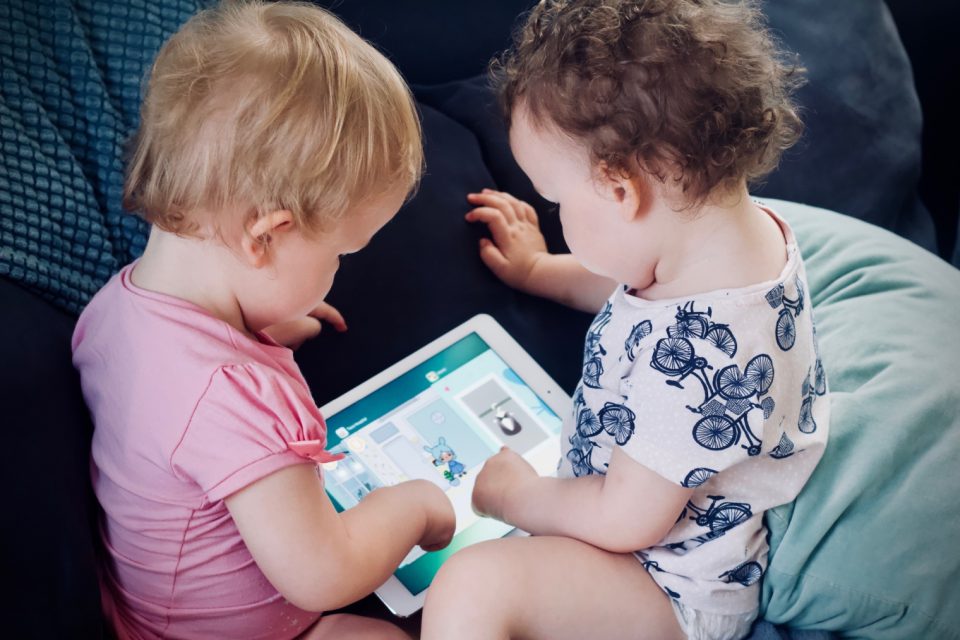Why It’s Never Too Late to Learn a Foreign Language
Learning as an adult can be difficult. We’re here to cheer you up and inspire you to get started.
Learning a foreign language is good for kids but how do they do it so easily? Here’s what science says about the cognitive advantages of kids.

Learning a foreign language is good for your brain. Regardless of age. That we already discussed. Now, if you looked into it, you saw that there are studies that show how bilingual children outperform monolingual children in math, social studies, reading, memory tests, and many other areas. The bottom line is that learning a second language at an early age is not bad – as many would think. On the contrary! But the question we ask ourselves today is: how and why do children learn foreign languages so easily?
Well, scientists claim that everything is about the brain and the stimulation it receives. Biologically, a child’s brain is prepared for learning. It is literally built to absorb information. You probably already noticed that if you lived with a small child for more than a month. But science also discovered that there’s a ‘critical period’ for learning languages that happens roughly from birth to around puberty.
Fascinating, isn’t it? Let’s find out more.

Babies aren’t born British, American, Portuguese, French, Spanish, or Turkish. I mean… they practically are, but, in fact, they aren’t. Being born in Germany doesn’t make you fluent in German. But thanks to your brain’s architecture, you gradually familiarize yourself with the language you were born into. You may not remember this process, but you learned your native language. You were not born knowing in.
Now, did it ever happen to you to live for a few days in a foreign country and then come back home and still hear the language that was spoken there? Even though people around you spoke your native language? Well, your brain got used to that language and kept hearing it. Isn’t that fascinating? That’s how important it is to get used to hearing a language. It is almost the same for babies.
But then, around one year of age, the brain’s capacity for change starts to decrease. As the baby gets used to the sound of the language his parents are speaking, the brain is slowly starting to lose the ability to recognize sounds from other languages.
Basically, as a baby, you start off with an impeccable slate. You are open to learning everything new – especially languages – because now your brain is more open than ever to new sounds. In the first few months, you listen – this is a crucial period during which the brain grows accustomed to the language – and then you slowly start to imitate the sounds you heard or still hear.
All these incredible processes are possible thanks to the brain and the amazing changes that happen inside it. To give you a glimpse of how important it is, hear this: during the first few years of your life, more than 1 million new neural connections are formed in the brain every single second.

All around this whole wide world, there are many kids who learn two languages at the same time starting from the first or second year of their life. Studies have shown that they can distinguish between the two languages they learn even before they speak the first word namely because they begin life with a tendency for phonology acquisition. That’s incredible!
Then there’s Stephen Krashen‘s theory that states that while adults learn languages, children acquire them. In other words, adults consciously learn about a language using vocabulary lessons, grammar rules and so on; and children gradually know the language better and better through speaking. How is that possible? Well, there’s a major difference between how these two generations assimilate language information. Let’s see.
Let’s think of listening to a song that you like, but you really, really like (pun intended). If you really, really like it, you will listen to this song more than a few times and soon enough you’ll know the rhythm and the lyrics by heart with no effort whatsoever. That’s what’s called unconscious learning – a process similar to how children learn languages.
On the other hand, when you study for a test, retaining information is not nearly as easy. And that happens because you make a conscious effort to learn – a process that makes it more difficult for your brain to gather information.
If you want to dive into it and find some scientific research to back this up, you’ll probably discover Dr. Paul Thompson’s study at UCLA. With this study, researchers observed that to acquire languages, children use a part of their brain called the “deep motor area”, an area that also controls unconscious actions like signing your name or riding a bike. This is why they pick up words and phrases without much effort – the same we do with songs. The conclusion of the study was, unsurprisingly, that language acquisition is second nature to children.
Furthermore, as we already discussed, the brain’s plasticity and structure change completely by the time we reach puberty. We become more skilled at complex thought and intellectual learning and we begin to process information differently. Our brain doesn’t focus on language learning as much as it did a few years back. Instead, it developed in other ways and language learning is now processed through mechanisms intended for general learning.

Learning a new language may seem like a piece of cake for children, but there are also other factors – like stimulation and environment – that influence their success in speaking a second language like fluent speakers.
Speaking about the importance of stimulation in a child’s life, the Harvard University Center on the Developing Child claims that when babies reach out for interaction through gestures, facial expressions, or babbling and get no answer in response – “or if the responses are unreliable or inappropriate” – the brain’s structure does not form as expected and this can lead to disparities in learning and behavior.
On the other hand, the environment is just as important. It is true that children have cognitive advantages over adults, but they also have a lot of time on their hands and no worries on their minds. Besides, they are not afraid to make mistakes. As you probably know, it is much easier to learn a language if you’re comfortable sounding foolish or making mistakes. Most adults feel anxious when they need to talk in a foreign language, but children just go at it! They make mistakes, they invent new words, they laugh and then try again. So, if you want your children to learn a second language, try to keep it that way. Don’t laugh at them when they make a mistake, and keep their environment stress-free.
It can be really tricky to learn a new language in your adult years. But with Mondly, the award-winning language learning app, you can learn any language just like a kid with practical topics and authentic conversations recorded by fluent voice artists so you can tackle day-to-day situations.
By combining bite-sized Daily Lessons and a gamified experience guaranteed to make you addicted to learning languages, Mondly is ready to literally glue any language into your brain.
Start using Mondly for free on your computer or download the app and learn languages fast anytime, anywhere.
Do you want to learn languages as fast as a kid in just 10 minutes a day?

Learning as an adult can be difficult. We’re here to cheer you up and inspire you to get started.

There are currently 7.7 billion people on Earth and no less than 7,139 living languages worldwide. But what are the most spoken languages in the

Discover the most advanced way to learn languages.